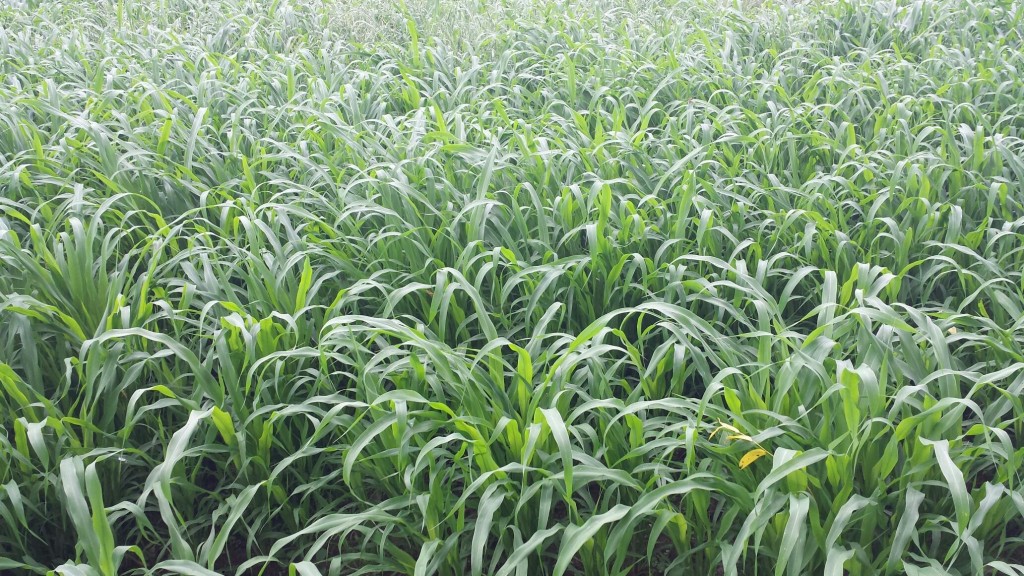Some graziers leave summer annuals growing into the fall, and wonder whether they can and should take advantage of these last fits of growth. The answer is that it’s possible, but you shouldn’t sacrifice a fall planting to do so.
Also, you’ve heard about dangers like nitrates and prussic acid that come with stressed plants, so what should you do to hedge against the inevitable frost damaged plants if you keep the stand a little longer?
When you keep sorghum sudan, sudangrass, and millet beyond late summer, days may still be warm but nighttime temperatures will be dropping. In addition, day length is getting steadily shorter, reducing photosynthetic potential. Growth will start dropping off, likely after the second cutting (depending on your region). That regrowth looks tempting, but be sure to keep the animals off it until it reaches 18 inches tall for sorghum products, and 12 inches for millet. This may take awhile as temperatures get increasingly cool. If you have not fertilized after the last cut, you have a reduced risk, but try to get it to as close to knee height as possible before grazing it.
Both Sorghum and millet are susceptible to high nitrates, but only sorghum (including forage sorghum, sorghum sudan and sudangrass) will be at risk of prussic acid.

Prussic Acid
Prussic acid, or hydrocyanic acid (HCN), forms from dhurrin, a compound that is naturally present in sorghums, sorghum-sudans, and to some extent sudangrasses – and tissue damaged by frost (although other forms of damage, like hail or herbicide damage can also cause HCN) is often at the highest risk. Wait at least a week before grazing plants that were frosted.
Prussic acid formation is also a threat when heavy rates of nitrogen are applied and soils are deficient in P and K.
Grazing presents the greatest risk when prussic acid may be present, because cows tend to select leaves before stalks – the place of highest concentration for prussic acid. If harvested as green chop, there is somewhat less potential for livestock poisoning because the lower-risk stems dilute the higher-risk stalks. The best bet with at-risk forage, though, is to ensile it, and the hydrocyanic acid dissipates as a gas during fermentation and feed-out.
Immature or drought-stressed plants and tillers are also more likely to accumulate prussic acid and nitrates – again because they have a greater proportion of leaves than stalks. Harvested at the correct stage of growth and properly ensiled, prussic acid danger is often gone after three weeks of fermentation. Immature forage in danger of prussic acid, however, should be ensiled for 6-8 weeks before it can be considered safe.
Drought stress also presents a problem when there is a heavy drought-ending rain. The rapid regrowth that results can be higher in prussic acid.
Nitrates
Accumulation of nitrates, leading to nitrate poisoning, is also related to stressful growing conditions like drought or herbicide injury, combined with high N fertilization rates. Nitrates accumulate when plants are able to take up enough or excess nitrogen but not enough moisture.
Unlike prussic acid, nitrates accumulate in the lower stalk portion of the forage, so risk can be reduced just by cutting higher and leaving more stubble (about 10-12 inches).Proper ensiling can reduce nitrate concentration by 40-60%, but nitrates will be stable in cured hay – so do not hay a drought-stressed crop.
If you suspect high nitrates, get the forage tested. Depending on nitrate concentration, you may have to limit the feed to a certain percentage of the ration (calculated by nitrate content).
Consider the rest of your rotation
When deciding whether to leave the summer annual in after the second or third cut and delaying or forgoing the winter annual, your opportunity cost is almost always too high. You have much more to gain by getting the next crop in on time than squeezing every drop out of the sorghum sudan. If you have the opportunity to use the field for a small grain forage and get it planted a little on the early side, seize it. Small grains use the extra time to accumulate tillers and root growth that boost their winter hardiness and yield next spring.
Additionally, you may have a limited window to get in the field to plant that crop, especially if there is either excessive or insufficient moisture, so you will want to leave some extra time to work with.
If you are early enough in getting the summer annual off, you may even have time to plant oats, which can add 1-3 tons to yearly dry matter totals (Too late this year, though, except in the deep south).
If you have mixed brassicas with your millet or sorghum-sudan, they can continue growth into the fall, making it more worthwhile to preserve the stand. The need for caution remains, however, when feeding frosted sorghum-sudan.
Forage sorghum is not typically grazed, but if you decide to graze or green chop it, wait until plants are at least 30 inches tall. (Caution is still needed with green chop.)
Speak to an expert at King’s AgriSeeds now at 1-717-687-6224 or email us at [email protected].
